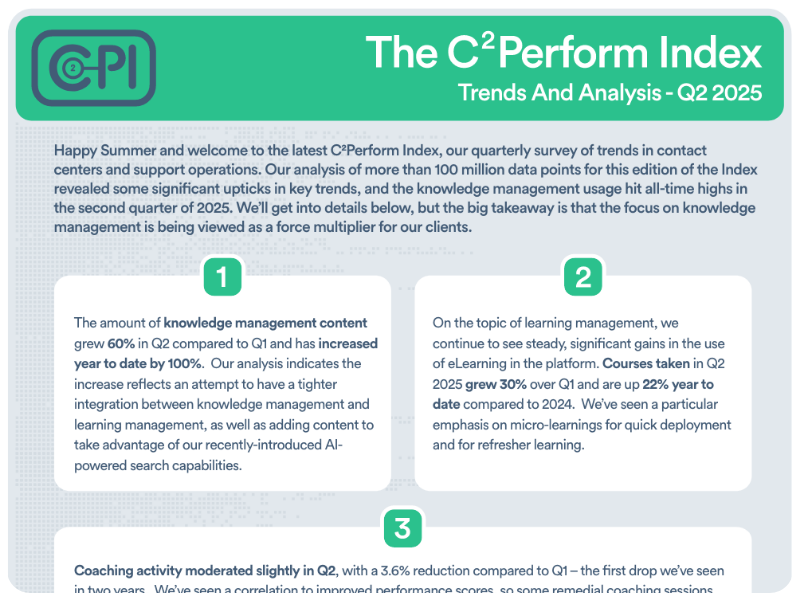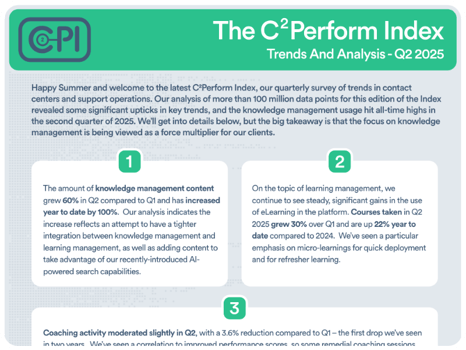One of your primary business goals is to ensure employee performance and deliver an outstanding customer experience. That means ensuring all members of your team understand, and can perform effectively, the functions of their job and the tools required to accomplish those functions. In order to do that, most businesses need effective learning programs and ways to monitor employee progress. Additionally, employee development and efforts to promote from within, which nurture institutional knowledge, require not just monitoring training resources, but a comprehensive system for learning management.
While the overall labor situation may have eased somewhat over the last couple of years, many employers are still facing labor shortages and the frequency of career changes is still a factor. Having a structured training program and clear pipeline for employee development is essential for your company to remain competitive in today's hiring landscape.
What Is a Learning Management System?
Learning management systems offer a way for businesses to develop, structure, and monitor employee development and training programs. While initial training is important for an employee to begin to fulfill their responsibilities, ongoing learning and development opportunities provide significantly more benefits in terms of building a strong team, encouraging employee progression and growth, and increasing employee engagement through your investments in them.
Learning management helps you scope out your needs and employee development stages, but comprehensive learning management systems (LMS) are all-inclusive. They include everything from the courses and content to quizzing, certification, and completion or status reports. In short, it’s a comprehensive solution for employee development and learning management for your business.
Setting Goals for Employee Development
As an employer, one of your goals is to hire talented people. While that’s a laudable and important goal, it often isn’t enough. Even the most talented people need training, motivation, encouragement, and opportunities to grow. Further, investing in employee learning and training demonstrates your commitment to them, which manifests in higher employee engagement as well as improved customer satisfaction. It’s a win-win-win.
The best employee development programs have clear goals, set by leadership, to help you build the teams you need, nurture employee strengths, and build skills to overcome existing weaknesses. In order to build effective and efficient training and learning programs, you’ll need to set clear goals for employee development.
Effective goal setting for employee development includes:
- Clear objectives - Your employee (and their supervisors) should understand the end goal of the learning process. For example, it may be to teach them new software or it may be development of a skill that will prepare them for an internal move into a position that is being developed or needs to be filled.
- Alignment between the training and stakeholders- Whether it’s the job role, employee development goals, or business goals, the training should be connected to a concrete objective and, ideally, the company’s Key Performance Indicators (KPIs). Further, all stakeholders should be involved in decision making regarding the training. Consult with supervisors, the employee, and company leadership. Preparing an employee for a role they aren’t interested in isn’t the best use of resources nor is preparing an employee for a role or job that isn’t relevant or required.
- S.M.A.R.T goals (Specific, measurable, attainable, relevant,timely)- Most of us have heard of S.M.A.R.T. goals at this point. The acronym stands for:
- Specific- In this case, specific may refer to specific learning or training module or even a training/learning track developed to earn a certificate.
- Measurable- There must be some way to measure the goals, whether through course completion, certifications, or tracking mechanisms within a LMS.
- Attainable- How you build and develop training programs and tracks should be mindful of building on existing skills rather than making significant leaps. Asking too much of an employee can backfire and discourage them. Making the goals attainable, either by creating realistic timelines or gradually building skills, will pay off in the long run, even if it takes longer.
- Relevant- As noted above, it should be relevant for both the employee, the role, and the organization.
- Timely- Create a realistic timeline to meet the learning objective whether that’s completing a course or a certification.
Using a Learning Management System in Your Employee Development Plan
If you’re looking for ways to strengthen your business, investing in your existing employees is a smart investment. Not only does it improve engagement and employee loyalty, but it can also help you attract new talent while growing your business. However, it’s not enough to just offer employees continuing education credits or to send them to workshops and seminars. You’ll need a way to keep everyone on the right path, track their progress, and continuously present growth, development, and learning opportunities.
Using a learning management system can help you streamline and organize your employee development efforts, but the right LMS can do so much more than provide online training and learning.
1. Training and Learning
Obviously, the primary objective of any LMS is to provide the content and courses for your employees. This may be as simple as providing an, informing new hires or refresher training on SOPs, reinforcing call center or sales scripts, teaching software or applications required for a position, or teaching concepts and skills beneficial to an employee’s role.
2. Manage Talent
One of the biggest benefits of a LMS is the ability to see where your employees are when determining hiring needs. For example, you may find that you’ve got an employee who, with a bit more training, could fill a more senior position rather than seeking an outside hire. Further, rather than relying upon a once a year meeting to gain alignment with individual goals as well business goals, a learning management system and its monitoring and reporting capabilities allow you to plan employee development and training year round. Finally, those reporting capabilities allow your management team to review and maximize your talent, ensuring that all your employees are in the best roles for them, based on their existing skills and training programs.
3. Establish Clear Employee Development Tracks
One of the biggest factors in employee churn is employee dissatisfaction with advancement opportunities and career tracks. A learning management system can help you and your teams create clear employee development tracks so individuals can see what they are preparing for and what they need to do to achieve their career goals. Using the LMS, employees can plot out their own advancement strategies, plan certifications, and determine what path they want to take.
4. Improve Recruitment Efforts
Let’s say you’ve reviewed your existing talent pool, their certifications, and their paths to advancement, and compared that to your current needs. There’s no exact match. You have two options and your LMS can help with both.
First, you can communicate to your team the new opportunities opening up to determine if someone wishes to advance their skills to fill the role. If you can’t find that individual and you need to do some recruiting and hiring, your LMS can help you there as well. Helping you identify skill and knowledge gaps is only the first step. Your LMS can also help you put together tests to determine whether your candidates have the right skills to meet your current needs and the potential to grow with your company.
5. Improve the onboarding process and experience
You used your LMS to identify a skill gap.You used it to find the right talent. Now, you can also use it to ensure your new hire has a streamlined onboarding experience. You can use your LMS to introduce your new hire to employee handbooks; job descriptions, roles and responsibilities; and present potential career paths and additional training opportunities from day one. Additionally, with testing capabilities, you can easily determine if, after onboarding, your new employee is ready for their role and prepared to train to move up.
A learning management system isn’t just about training and educating, it’s about managing your talent, your supervision, and your future growth. You need software that supports you and your team and provides you with the data you need to assess and adjust both of your needs. A robust learning management system provides you with the insights you need to prepare your team and your business for growth.
If you’re ready to see how C2Perform can help you grow, manage, and maximize your employees by investing in their growth, get in touch with our team today.
 English
English Español
Español





.png?height=350&name=Untitled%20(300%20x%20175%20px).png)



